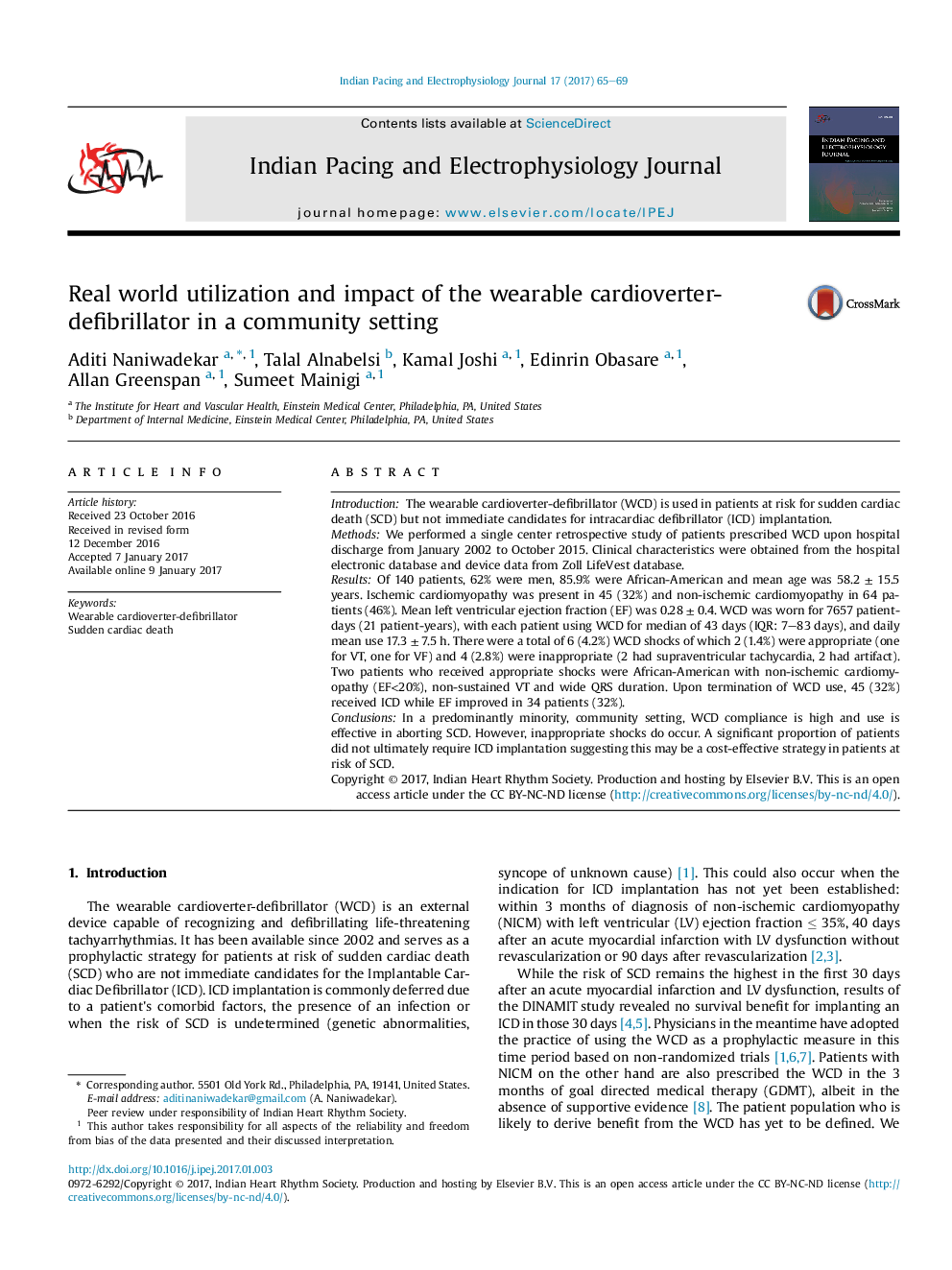| Article ID | Journal | Published Year | Pages | File Type |
|---|---|---|---|---|
| 5604090 | Indian Pacing and Electrophysiology Journal | 2017 | 5 Pages |
IntroductionThe wearable cardioverter-defibrillator (WCD) is used in patients at risk for sudden cardiac death (SCD) but not immediate candidates for intracardiac defibrillator (ICD) implantation.MethodsWe performed a single center retrospective study of patients prescribed WCD upon hospital discharge from January 2002 to October 2015. Clinical characteristics were obtained from the hospital electronic database and device data from Zoll LifeVest database.ResultsOf 140 patients, 62% were men, 85.9% were African-American and mean age was 58.2 ± 15.5 years. Ischemic cardiomyopathy was present in 45 (32%) and non-ischemic cardiomyopathy in 64 patients (46%). Mean left ventricular ejection fraction (EF) was 0.28 ± 0.4. WCD was worn for 7657 patient-days (21 patient-years), with each patient using WCD for median of 43 days (IQR: 7-83 days), and daily mean use 17.3 ± 7.5 h. There were a total of 6 (4.2%) WCD shocks of which 2 (1.4%) were appropriate (one for VT, one for VF) and 4 (2.8%) were inappropriate (2 had supraventricular tachycardia, 2 had artifact). Two patients who received appropriate shocks were African-American with non-ischemic cardiomyopathy (EF<20%), non-sustained VT and wide QRS duration. Upon termination of WCD use, 45 (32%) received ICD while EF improved in 34 patients (32%).ConclusionsIn a predominantly minority, community setting, WCD compliance is high and use is effective in aborting SCD. However, inappropriate shocks do occur. A significant proportion of patients did not ultimately require ICD implantation suggesting this may be a cost-effective strategy in patients at risk of SCD.
